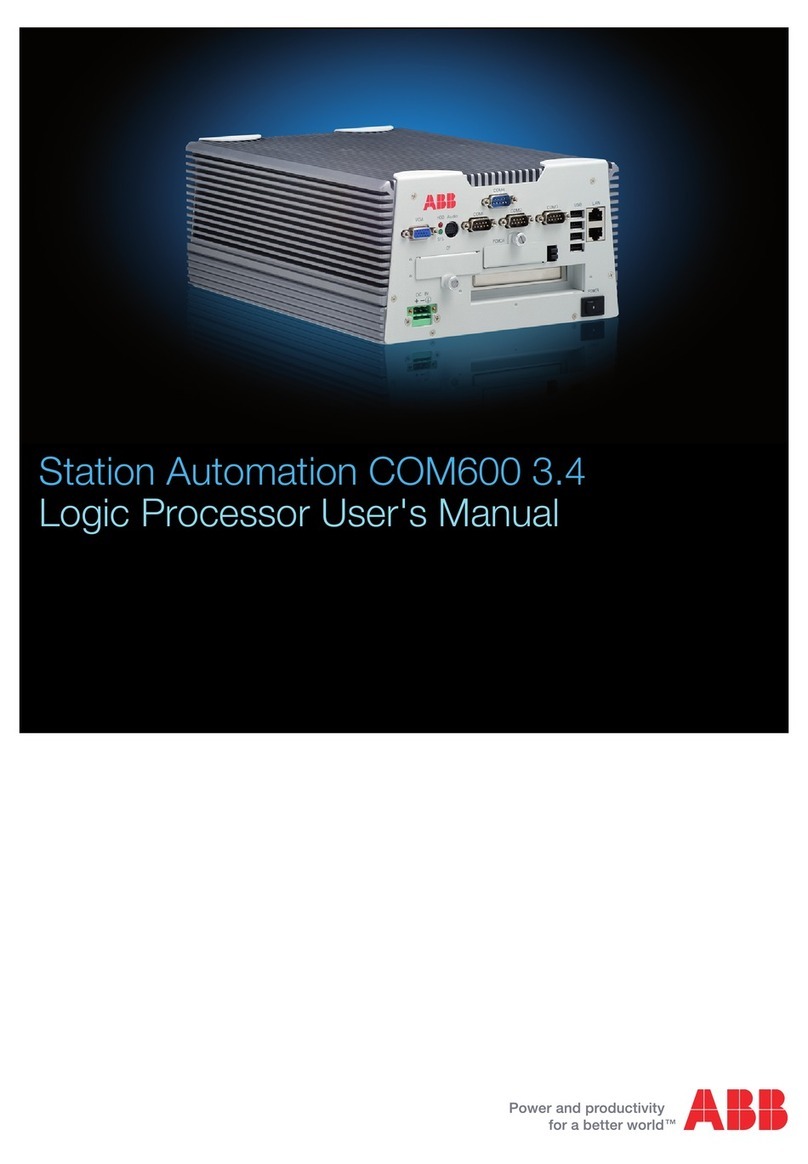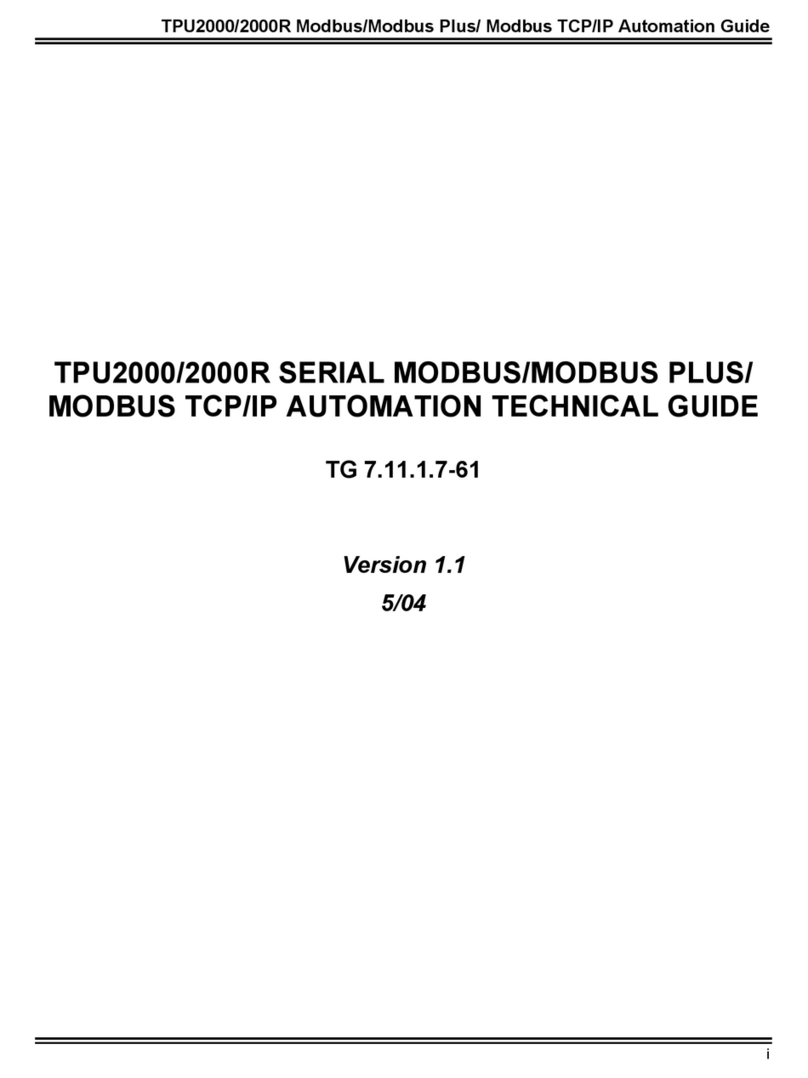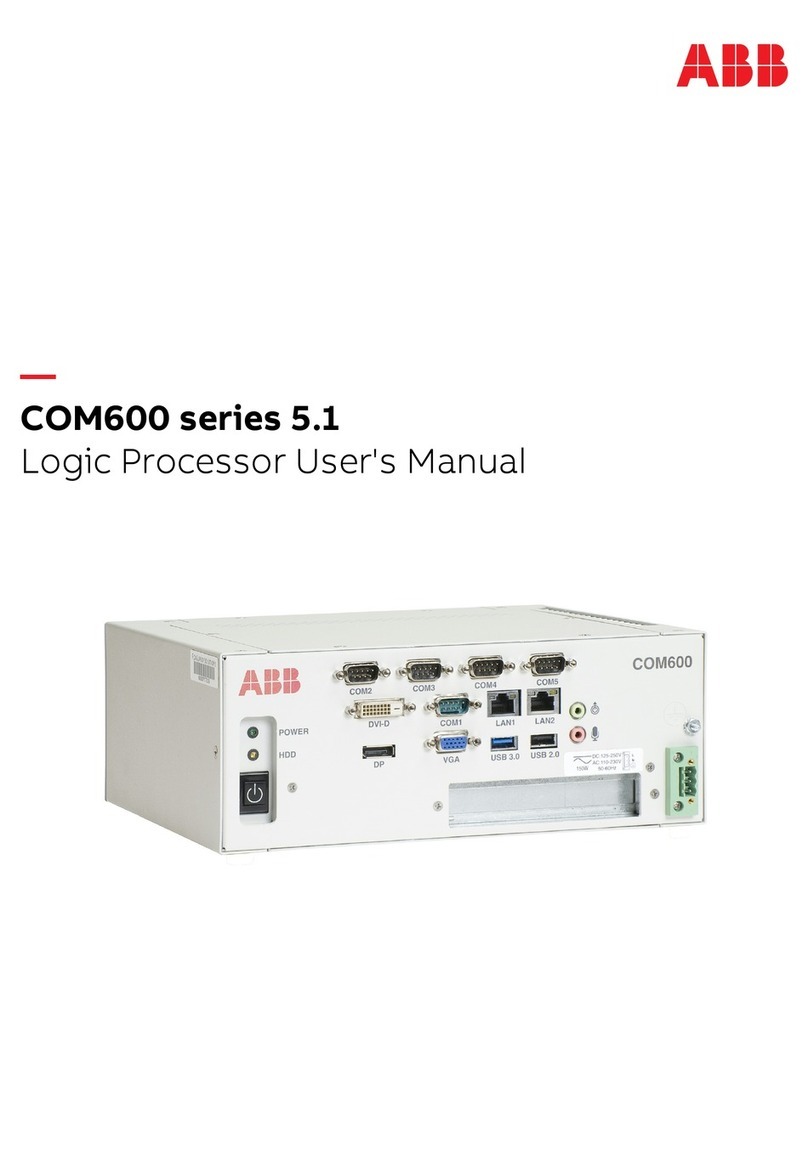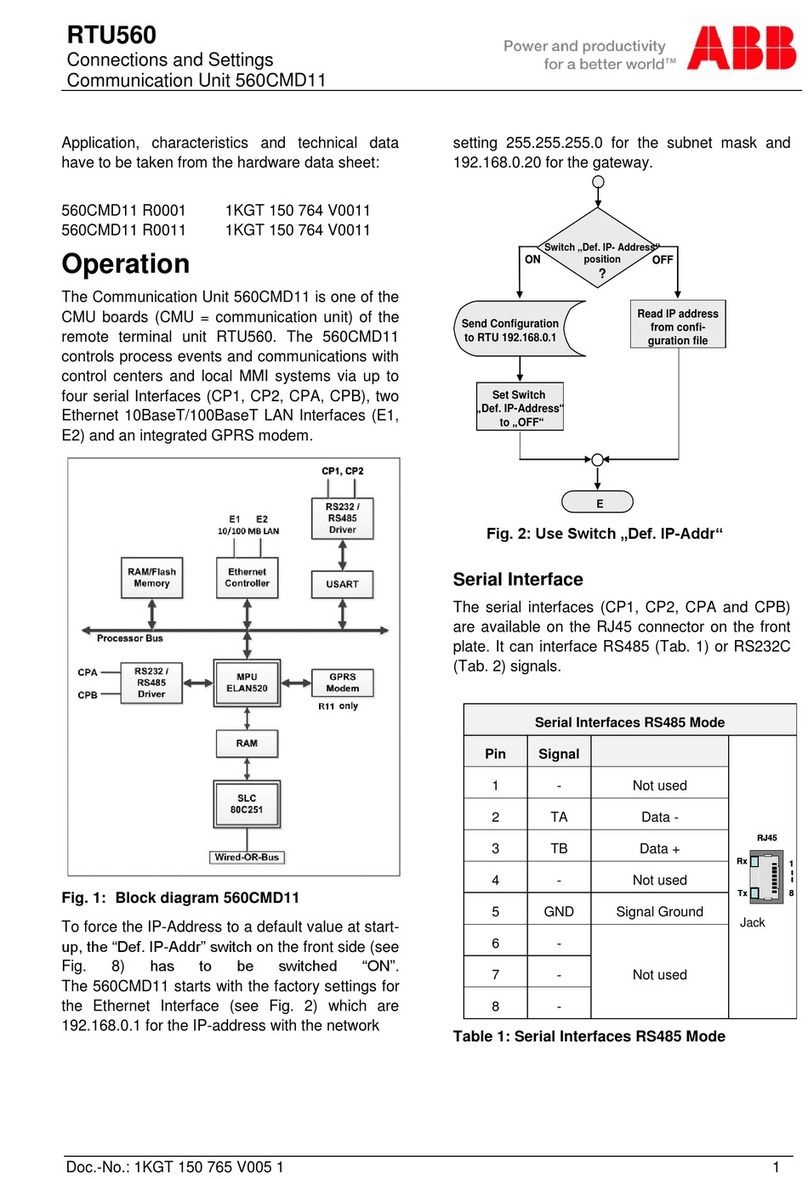
647008/002 - 2000/05 it-en - 3/40
Index
Introduction 5
1. Packing and transport 5
2. Checking on receipt 5
3. Storage 6
4. Description 7
4.1. General 7
4.2. Reference Standards 7
4.3. Ambient conditions 7
4.4. Technical data 8
5. Installation of the PR521 unit 9
5.1. Connection to the auxiliary circuits 9
6. Programming the PR521 unit 10
6.1. Phase current sensors (C.S.) 10
6.1.1. General 10
6.1.2. Dip switch
representation 10
6.1.3. Selection of type of phase
current sensor (C.S.) 11
6.2. PR521 unit in the version with
protections 50 and 51 12
6.2.1. Protection functions 12
6.2.1.1. Protection against overcurrent (51) 12
6.2.1.1.1.Selection of threshold value (I>) 13
6.2.1.1.2.Selection of the type of curve 14
6.2.1.1.3.Selection of the trip time 15
6.2.1.1.4.Example of setting 15
6.2.1.2. Protection against short-circuit
with adjustable time-delay (50) 17
6.2.1.2.1.Selection of the threshold value (I>>) 17
6.2.1.2.2.Selection of the trip time (t>>) 17
6.2.1.2.3.Example of setting 18
6.2.1.3. Protection against instantaneous
short-circuit (50) 19
6.2.1.3.1.Selection of the threshold value
(I>>>) 19
6.2.1.3.2.Example of setting 19
6.2.2. PR521 unit (50 - 51) front
nameplate 20
6.3. PR521 unit in the version with protection
50, 51 and 51N 21
6.3.1. Protection functions 21
6.3.1.1. Protection against earth fault by
means of internal toroidal
transformer (51N) 21
6.3.1.1.1.Selection of the threshold value (Io>) 21
6.3.1.1.2.Selection of the trip time (to>) 22
6.3.1.1.3.Example of setting 23
6.3.1.2. Protection against earth fault
by means of external toroidal
transformer (51N) 24
Indice
Premessa 5
1. Imballaggio e trasporto 5
2. Controllo al ricevimento 5
3. Magazzinaggio 6
4. Descrizione 7
4.1. Generalità 7
4.2. Norme di riferimento 7
4.3. Condizioni ambientali 7
4.4. Dati tecnici 8
5. Installazione dell'unità PR521 9
5.1. Collegamento ai circuiti ausiliari 9
6. Programmazione dell'unità PR521 10
6.1. Sensori di corrente di fase (C.S.) 10
6.1.1. Generalità 10
6.1.2. Modalità di rappresentazione
dei dip switch 10
6.1.3. Selezione del tipo di sensore di
corrente di fase (C.S.) 11
6.2. Unità PR521 nella versione con le
protezioni 50 e 51 12
6.2.1. Funzione di protezione 12
6.2.1.1. Protezione da sovracorrente (51) 12
6.2.1.1.1.Scelta del valore di soglia (I>) 13
6.2.1.1.2.Scelta del tipo di curva 14
6.2.1.1.3.Scelta del tempo di intervento 15
6.2.1.1.4.Esempio d'impostazione 15
6.2.1.2. Protezione da cortocircuito con
ritardo regolabile (50) 17
6.2.1.2.1.Scelta del valore di soglia (I>>) 17
6.2.1.2.2.Scelta del tempo d'intervento (t>>) 17
6.2.1.2.3.Esempio di impostazione 18
6.2.1.3. Protezione da cortocircuito
istantaneo (50) 19
6.2.1.3.1.Scelta del valore di soglia
(I>>>) 19
6.2.1.3.2.Esempio di impostazione 19
6.2.2. Targhetta frontale unità PR521
(50 - 51) 20
6.3. Unità PR521 nella versione con le
protezioni 50, 51 e 51N 21
6.3.1. Funzioni di protezione 21
6.3.1.1. Protezione di guasto a
terra attraverso toroide
interno (51N) 21
6.3.1.1.1. Scelta del valore di soglia (Io>) 21
6.3.1.1.2. Scelta del tempo di intervento (to>) 22
6.3.1.1.3. Esempio d’impostazione 23
6.3.1.2. Protezione di guasto a
terra attraverso toroide
esterno (51N) 24

































